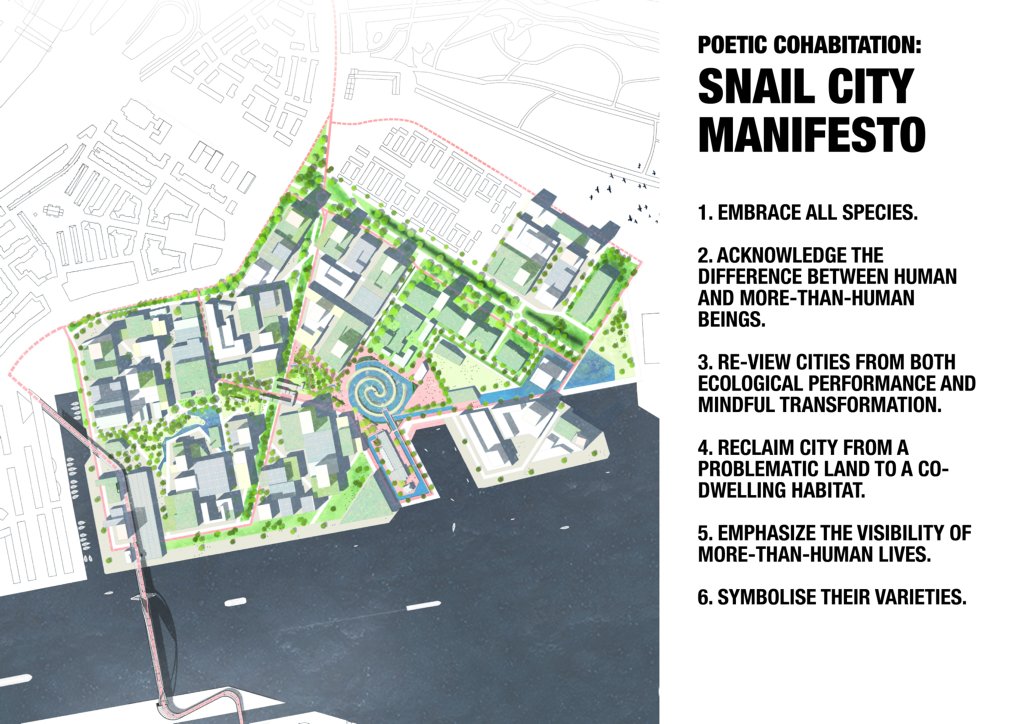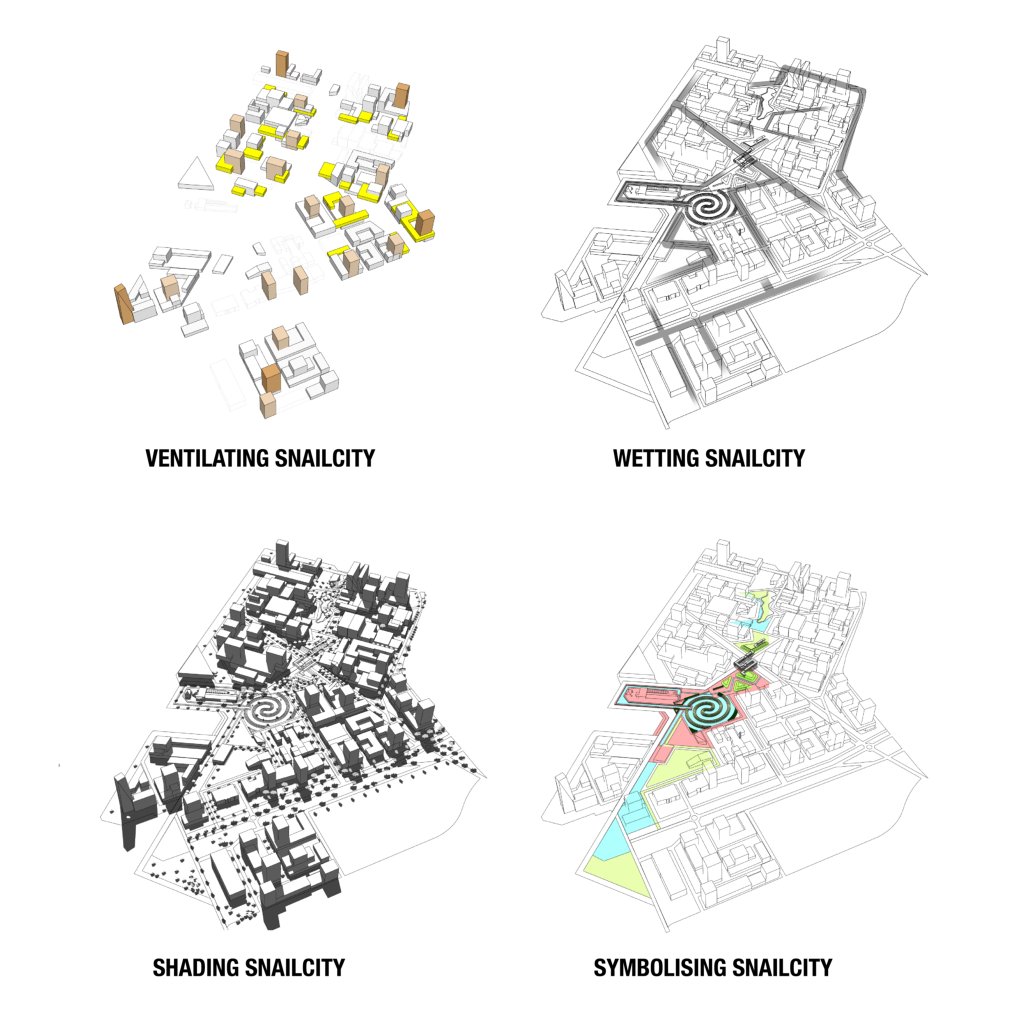In many ways, snails are awkward. They are known for their slow speed, while their shells are evolving rapidly thanks to the increasing temperature in urban environments. They are found everywhere but still, many snail species are at risk. For centuries, snails have been regarded as the symbol of sin, and these days we are banning them from our gardens as they are notorious plant killers. Including snails in design is, therefore, a manifesto against anthropocentric species selection. The snail represents a large more-than-human group that has been ignored and marginalized in designing cities. This project explores a poetic approach to transforming our minds, affection, and relations with this mysterious creature.
Snails are sensitive to human-induced changes in the landscape. In Amsterdam Noord, high temperatures, drought, soil contamination, and habitat fragmentation threaten their existence. Their decline affects other animals through the food web, while at the same time, people desire a more liveable city, one that is climate-proof, pollution free, and contains more green space. This means that conditions that snails prefer overlap with what we desire.
The industrial Hamerkwartier site in Amsterdam Noord has been reclaimed with this in mind. Following the principle “Snail First”, heavy traffic has been removed from the central area. A series of parks, gardens and pedestrian areas form the new backbone, providing a clean, moist, and high-quality space. In the centre, a gigantic labyrinth symbolises our potential cohabitation with snails and more. It also cleanses the wastewater collected through several corridors and provides a unique space where people can lose themselves in this intense city.

Snail City is a manifesto to include all species living in proximity to human beings. To achieve this cohabitation, designers need to carefully search the opportunities and limitations of the animal dwelling in synanthropic environments. Eco-design solutions should facilitate the living demands of animals and humans, to create a greater diversity of species that can survive and flourish in the micro/macro landscape of our Anthropocene Age.
While symbolic habitat has been applied to create mindful transformation in this project, we are still working with poorly defined design vocabularies. More detailed design is necessary to unlock how people experience other animals and how animals experience us. We need to explore how a more poetic language can generate novel human-animal relationships.
Download link to the report


